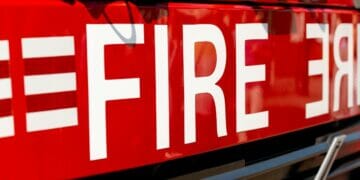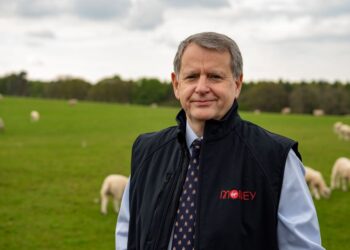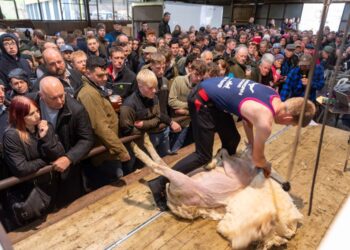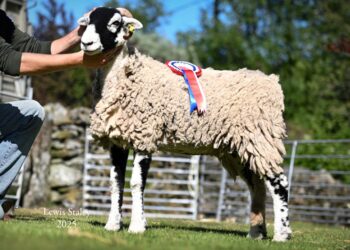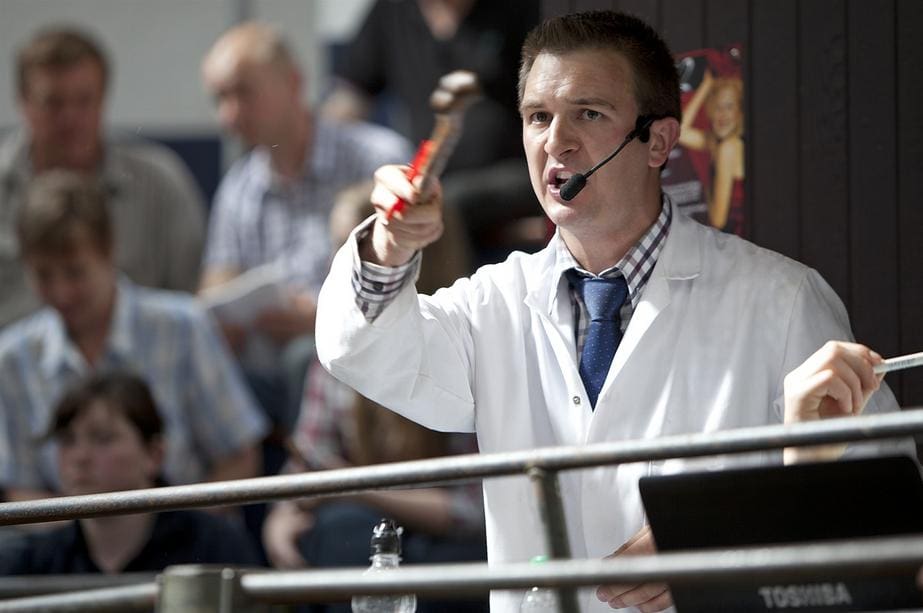
For the first six months of the year there was high demand for store cattle, which resulted in some high prices.
The May Day store cattle sale saw almost 1,000 head go under the hammer, with tremendous prices paid. This continued at our Luke Fair store cattle sales in October, which saw almost record prices.
In one particular consignment, 65 steers and heifers averaged £1,433.95. Overall, steers averaged £1,141.19, which was up £122 on the year, while heifers £1,106.05, an increase of £180.
The suckler calf sale in November saw a top price of £4,000 for a seven-month old Limousin cross heifer calf, with the reserve making £2,650.
This was a tremendous sale of young cattle, with heifers averaging £1,117.72 – up by £153 per head on the year – and steers up by £137 at £968.18.
On 12th November, we held what is widely recognised as one of the largest beef breeding sales in the country.
This was headlined by a Limousin cross in-calf heifer at £3,900. This sale of just over 500 beef breeding cattle saw the knock-on effect of demand seen a the earlier suckler sales.
Throughout the last 12 months, the volume of cattle and remained strong, and it is anticipated this will continue as we head into 2021.
With regard to the sheep trade, January started steadily, but as we moved into February the lamb trade gained momentum.
Record levels were achieved and, at the peak, cast ewes were making more than £200.
The end of March brought COVID-19 and the lockdown, but we only missed two weeks of trading. Adhering to Government restrictions and following social distancing guidelines, we operated a drop and go service and managed to continue successfully thereafter.
The markets began to recover, and in the summer we saw records broken and an extremely consistent trade.
The usual tough periods in late summer and early autumn did not happen, with demand remaining consistently strong.
We have been regularly seeing between 4,000 and 5,000 head at Tuesday evening sales, peaking at just under 7,000 one week.
Quality lambs have been coming forward from the Eden Valley and further afield.
These sales attract between 12 and 14 buyers every week, boosting trade.
To accommodate changing practices within the sheep industry, we introduced a sale of Continental breeding sheep which was held in August.
For a new sale it was an outstanding success, attracting good numbers and a large crowd of buyers, with trade good for all classes.
Our first breeding lamb sale of the year was the Mule gimmer lambs, with an entry of more than 12,500. Despite initial uncertainty around demand, the average was £26 up on the year — a testament to the consignors and the popularity of the North of England Mule.
Following on, the Swaledale breeding sheep sales in October saw trade flying. A pen of 10 ewes sold for £420 each, and the sale’s overall average for three-crop ewes was £134.58.
At the renowned Kirkby Stephen Swaledale ram sales, number of buyers around the was restricted, but the outcome far exceeded all expectations, with quality rams keenly sought after by those present.
The first day was the sale of the Swaledale aged rams and ram lambs. Prices topped at £8,000 for a five-shear ram, and the top ram lamb made £6,000.
The following two days saw the sale of Shearling rams, with more than 700 presented. The two-day average was £2486.04, which was up by £530 for 619 shearling rams.
I believe these sales at Kirby Stephen are integral the UK sheep industry, which starts on the hill and works its way down and into the lowland prime lambs.
High quality upland breeding sheep really do represent the pinnacle of the British sheep sector and provide the foundation of the genetics in the industry.



